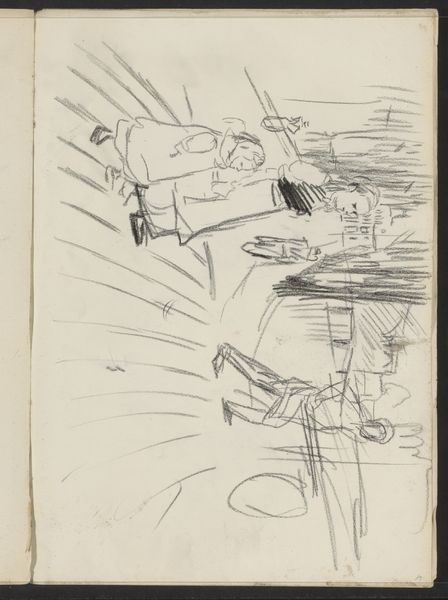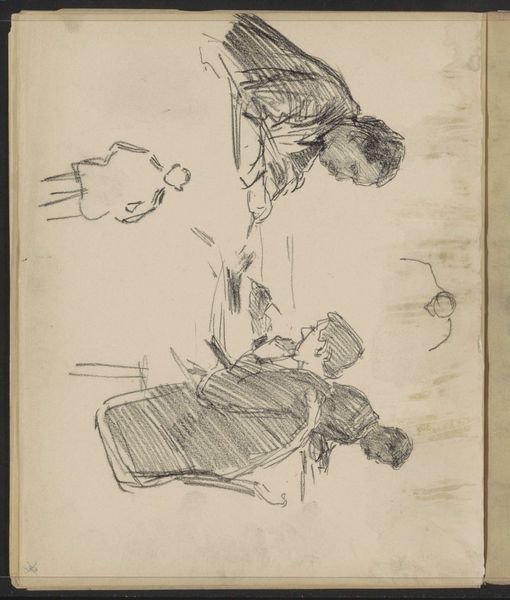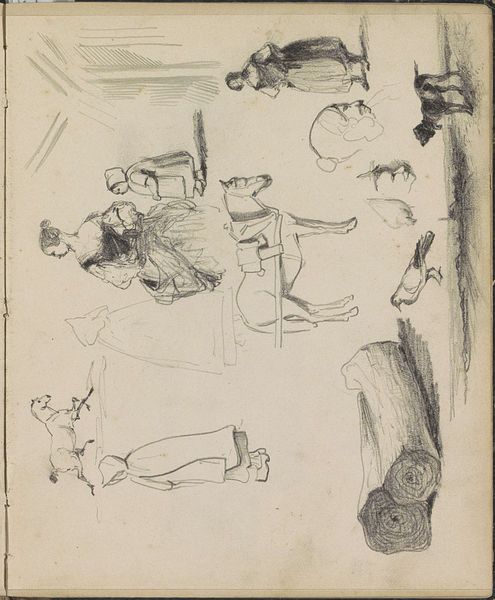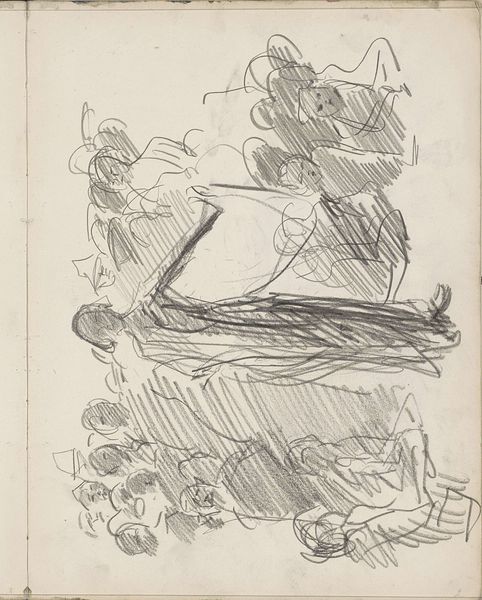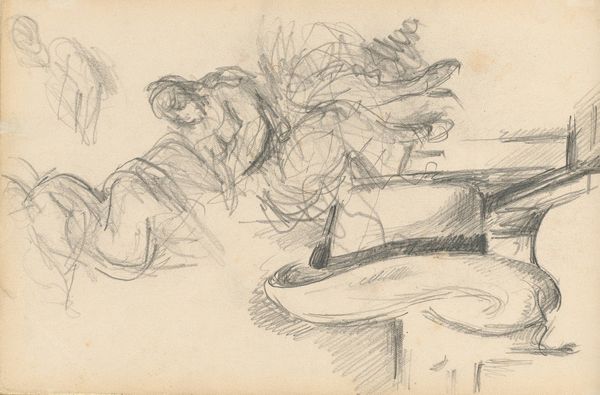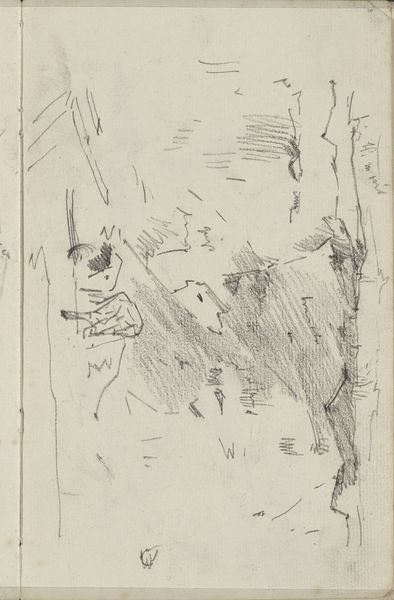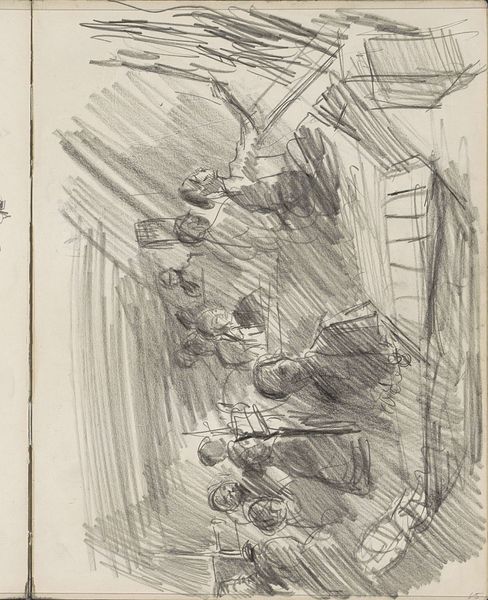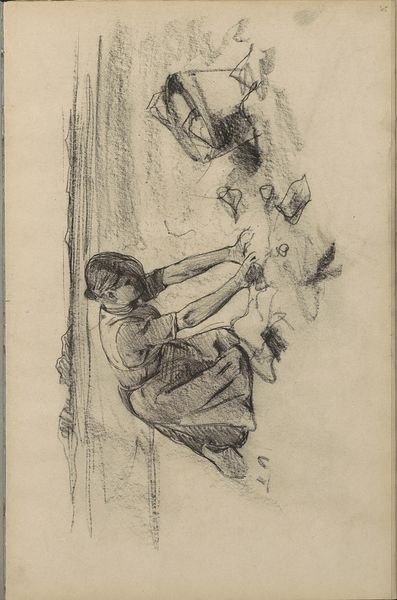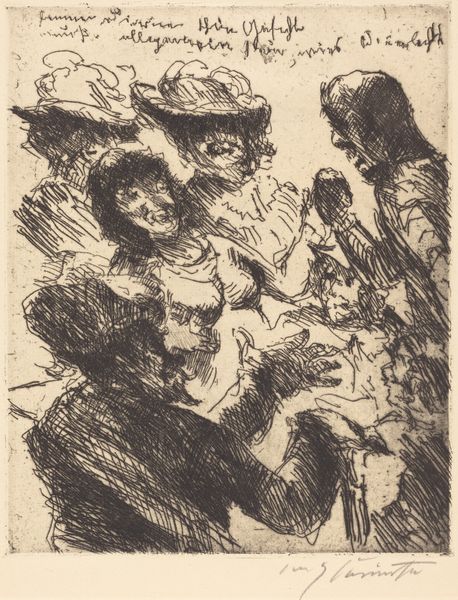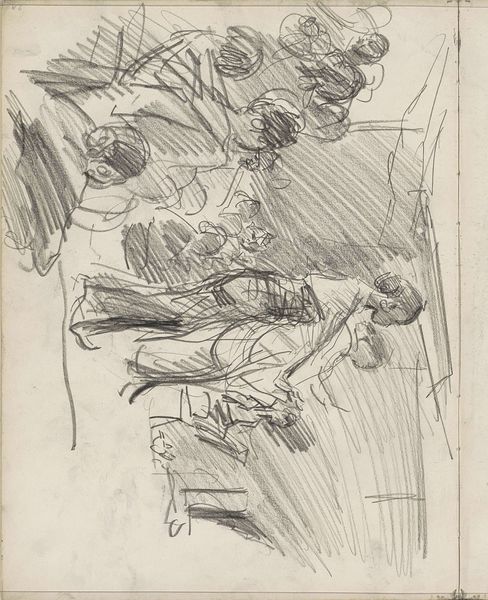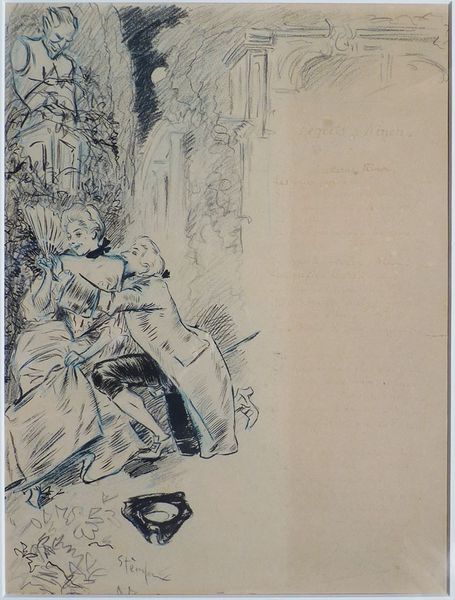
Voorbijgangers, mogelijk op de Herengracht te Amsterdam c. 1886 - 1934
0:00
0:00
Copyright: Rijks Museum: Open Domain
Editor: Here we have Isaac Israels' pencil drawing, "Voorbijgangers, mogelijk op de Herengracht te Amsterdam," dating from around 1886 to 1934. It feels unfinished, but energetic. What strikes you about this piece? Curator: The sketch’s raw energy speaks volumes. Note how Israels captures the transience of city life, those fleeting moments often missed. What narrative do you think he's hinting at here? Editor: I see everyday people going about their business. Curator: Exactly. It is a slice of life focusing on class dynamics. Notice the quickly rendered figures: are they interacting or simply coexisting? Israels's impressionistic style often democratized his subjects. He blurs the lines between the individual and the collective. Editor: So, it's a statement on society? Curator: In a way, yes. By not idealizing these figures, Israels disrupts traditional portraiture’s emphasis on the elite. He's interested in the poetics of the ordinary. Consider also Amsterdam in this period—a city grappling with industrialization and changing social structures. Editor: It makes you wonder what their lives were like. Curator: Precisely. And that is what makes this sketch politically resonant. It prompts reflection on who is represented and whose stories are valued within the grand narrative of history. Art should be for everyone, not just a select few. Editor: I hadn’t thought of it that way, seeing the potential political context within what seems like just a regular sketch. Curator: Exactly! By considering the cultural moment, we unearth those vital dialogues with the past that can truly enrich our understanding of ourselves and of our society.
Comments
No comments
Be the first to comment and join the conversation on the ultimate creative platform.
